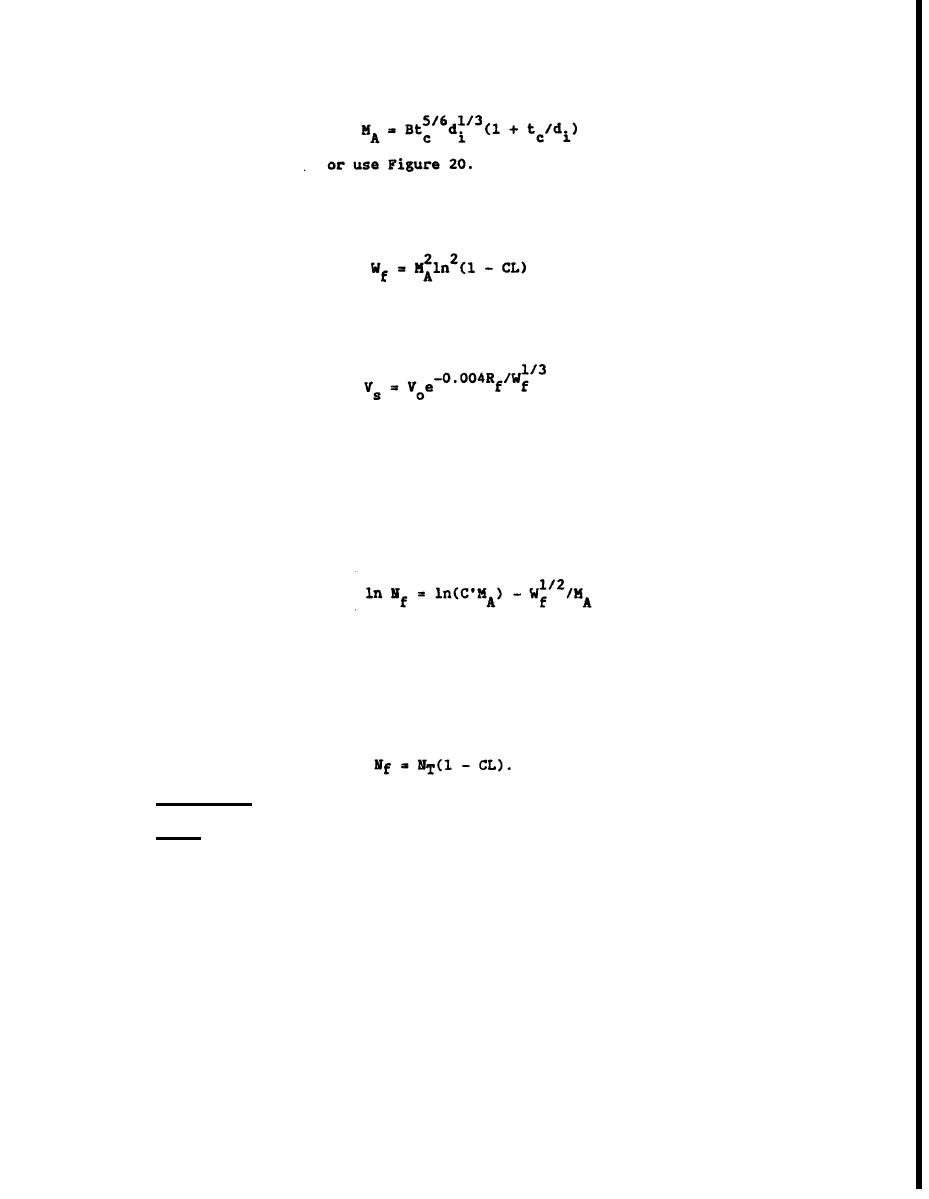

Custom Search
|
|

|
||
 Calculate the weight of the critical design fragment for
(4)
the prescribed confidence level from Figure 21 or
Equation (29b):
For the distance traveled by the fragments, Rf, calculate
(5)
the striking velocity, Vs, of the initial design fragment
using Equation (22):
If the distance traveled is less than 20 feet, the striking
velocity is taken as equal to the initial velocity for all
size fragments.
Calculate the number of fragments having a weight greater
(6)
than the critical weight which may cause detonation of an
acceptor charge and perforate or cause spalling of a
concrete barrier from Equation (23a):
Alternatively, Nf can be determined by using Figures 30
and 31. Determine the total number of particles, NT,
from Figure 31 and the Confidence Level, CL, corresponding
to the particular fragment weight, Wf, from Figure 30.
The number of particles with weight greater than the weight
Wf can be calculated from:
Calculation:
Given:
Type of explosive: TNT with density = 0.0558 lb/in3
(1)
Mild steel casing
(2)
Density of casing: 0.281 lb/in3
(3)
Thickness of casing:
(4)
tc = 0.5 inch
Inside diameter of casing: di = 12 inches
(5)
Length of charge:
(6)
40 inches
Design Confidence Level: CL = 0.999
(7)
2.08-63
|
 |
|
 |
||